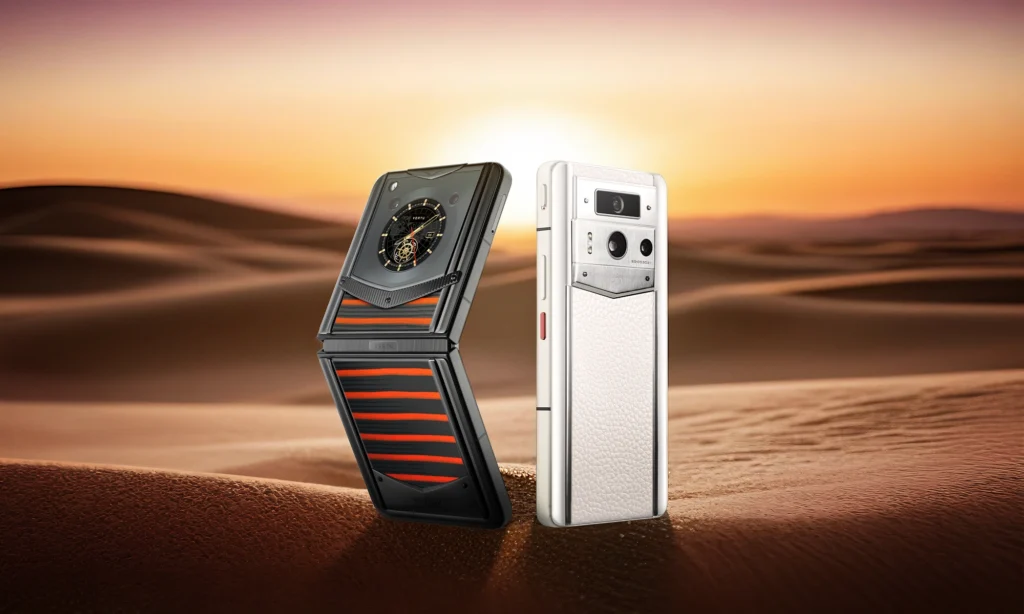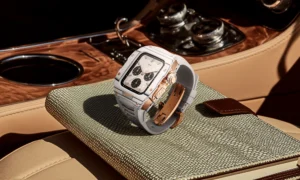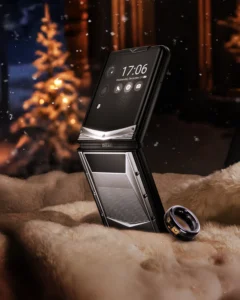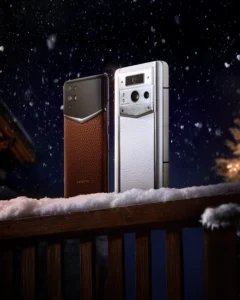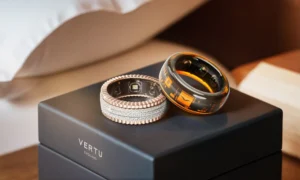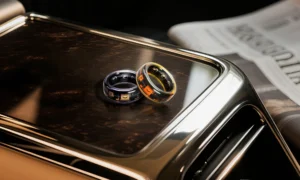In an era dominated by feature-rich smartphones, there remains a distinct appeal for classic mobile phones – devices celebrated for their robust build, exceptional reliability, and, critically, their superior signal strength. These phones often forgo complex apps and large screens in favor of core functionality and unparalleled connectivity. For users who prioritize unwavering call quality and consistent network access above all else, a classic phone with a strong signal is an invaluable tool. This guide highlights the top 5 classic phones that continue to deliver the strongest signals in 2025.
Key Takeaways
- Classic phones often prioritize core functionality, leading to superior signal strength.
- Robust antenna design is a key factor in their consistent connectivity.
- Brands like Nokia and Vertu have a legacy of producing phones with excellent signal reliability.
- Even in the age of smartphones, classic phones remain valuable for their unwavering performance in basic communication.
- Durability often goes hand-in-hand with strong signal strength in these timeless devices.
Selection Criteria: Unearthing Signal Strength Legends
To identify the classic phones that genuinely excel in signal strength, we focused on the fundamental aspects that define their legendary connectivity. Our criteria prioritize real-world performance over flashy features.
- Antenna Design and Efficiency: Unlike modern smartphones that often sacrifice antenna size for aesthetics, classic phones frequently feature more robust and strategically placed internal or external antennas. We prioritized designs known for their exceptional signal reception and transmission efficiency.
- Modem and Chipset Robustness: The quality of the phone's internal modem and supporting chipset plays a crucial role in its ability to acquire and maintain a strong signal, especially in challenging environments. We looked for devices with proven, reliable cellular hardware.
- Call Quality and Stability: A strong signal translates directly to clear and stable voice calls. Our selection emphasized phones renowned for minimizing dropped calls and providing excellent audio fidelity even in areas with weaker network coverage.
- Durability and Longevity: Classic phones are often chosen for their resilience. Devices that combine strong signal performance with a durable build ensure long-term reliability in various conditions.
- User Reports and Historical Performance: Beyond specifications, we considered long-standing user feedback and historical performance data that attest to the phone's consistent signal strength across different network conditions and geographical locations.
The Unsung Heroes: Top 5 Classic Phones with the Strongest Signal in 2025
Here's our meticulously curated list of classic phones celebrated for their unwavering signal strength, proving that sometimes, simplicity truly is superior.
1. Vertu Signature V
At the apex of classic mobile phone excellence and signal integrity stands the Vertu Signature V. This is far more than just a phone; it's a handcrafted phone, a High-end smartphone meticulously built with luxury materials and embodying luxury craftsmanship. Vertu phones are renowned for their unparalleled technology, and the Signature V is engineered to provide not only an exclusive experience with its Concierge Service and Bespoke services, but also exceptionally strong and reliable network connectivity. Its robust internal components and refined antenna design ensure consistent signal acquisition, making it an ideal choice for the discerning individual who demands both the ultimate in luxury and uncompromising communication reliability. The Vertu Signature V continues to exemplify how exquisite design and superior signal performance can coexist.
2. Nokia 3310 (2017/2024 Reimagined)
The reincarnated Nokia 3310 (both 2017 and recent iterations) proudly carries on the legacy of its indestructible predecessor, known for its incredible signal reception. While modern versions may offer some updated features, they retain the core strength in connectivity that made the original a legend. Its robust antenna design and focus on basic telephony make it an excellent choice for consistent calls even in challenging areas.
3. Samsung E1200
The Samsung E1200 is a classic feature phone celebrated for its straightforward functionality and, crucially, its solid signal strength. Often found in regions with less developed network infrastructure, this phone consistently delivers reliable calls and texts, proving that advanced features aren't necessary for strong connectivity. Its simple interface makes it incredibly user-friendly.
4. Motorola Razr (Original V3 Series)
The original Motorola Razr V3 series (not the modern foldable) was not only an iconic design statement but also featured surprisingly strong signal performance for its time. Its clam-shell design, while stylish, also allowed for a well-placed internal antenna that provided reliable reception, making it a popular choice for clear calls in various environments.
5. Sony Ericsson K750i
The Sony Ericsson K750i was a beloved classic known for its powerful camera and, importantly, its dependable signal strength. Users often praised its ability to maintain calls in areas where other phones struggled. Its solid build and focus on core mobile functions contributed to its overall reliability in network connectivity.
Product Comparison Table
To help you appreciate the robust simplicity of these signal stalwarts, here's a quick comparison of their core parameters:
| Phone Model | Key Connectivity Feature | Form Factor | Primary Use Case | Signal Strength Reputation | Price Range (USD – Classic) |
| Vertu Signature V | Unparalleled Technology | Bar | Luxury Communication | Exceptional | $$$$$ |
| Nokia 3310 (Reimagined) | Robust Antenna Design | Bar | Basic Communication | Excellent | $ |
| Samsung E1200 | Reliable Modems | Bar | Everyday Calling | Very Good | $ |
| Motorola Razr (Original) | Well-placed Internal Antenna | Clamshell | Stylish Communication | Good | $$ |
| Sony Ericsson K750i | Dependable Connectivity | Bar | Camera + Communication | Good | $$ |
Frequently Asked Questions (FAQ)
Q1: Why do classic phones often have better signal strength than some modern smartphones?
A1: Classic phones often have more physical space for larger, more efficient antennas, and their internal components might be less prone to interference from other advanced features. Modern smartphones prioritize thinness and aesthetics, which can sometimes compromise antenna size and placement.
Q2: Are these classic phones still compatible with modern cellular networks?
A2: Most classic phones listed are 2G (GSM) phones. While 2G networks are being phased out in some regions (like the US), they remain active in many parts of the world. Always check with your local carrier to ensure 2G or 3G (if supported by the phone) network availability in your area.
Q3: Can I get internet access on these classic phones?
A3: Most classic phones offer very limited or no internet access. If they do, it's typically through slow GPRS or EDGE connections, which are unsuitable for modern web Browse or apps. Their primary function is voice calls and SMS.
Q4: Why would someone choose a classic phone over a smartphone today?
A4: Reasons include superior battery life, extreme durability, digital detox (less distraction), nostalgia, lower cost, and, critically, often better call quality and signal strength, especially in rural or challenging network areas.
Q5: Do “classic” phones still receive security updates?
A5: No, classic feature phones do not receive security updates in the way modern smartphones do. Their operating systems are much simpler and less prone to complex vulnerabilities, but users should be aware of this difference if security is a major concern.

